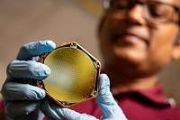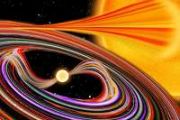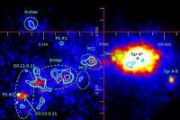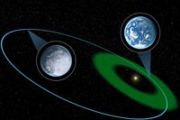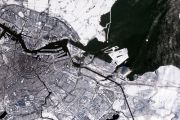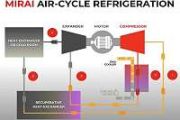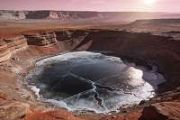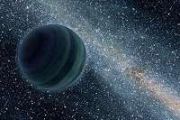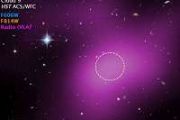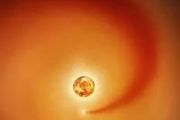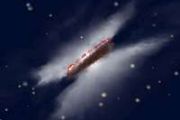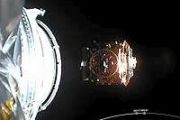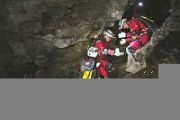
Copernical Team
Astronomers create the first 3D-printed stellar nurseries
 Astronomers can't touch the stars they study, but astrophysicist Nia Imara is using 3-dimensional models that fit in the palm of her hand to unravel the structural complexities of stellar nurseries, the vast clouds of gas and dust where star formation occurs.
Imara and her collaborators created the models using data from simulations of star-forming clouds and a sophisticated 3D printing pr
Astronomers can't touch the stars they study, but astrophysicist Nia Imara is using 3-dimensional models that fit in the palm of her hand to unravel the structural complexities of stellar nurseries, the vast clouds of gas and dust where star formation occurs.
Imara and her collaborators created the models using data from simulations of star-forming clouds and a sophisticated 3D printing pr Cosmonaut calls 1st approach to Nauka Module during spacewalk from ISS 'Historic Moment'
 During his spacewalk from the International Space Station (ISS), cosmonaut Pyotr Dubrov first approached the new module Nauka, calling it a historic moment, according to the crew's talks with the Earth, broadcast by Roscosmos.
On Friday, Dubrov and his colleague Oleg Novitsky make a spacewalk to connect Nauka module to the US power supply.
"A historic moment - the first grab of the h
During his spacewalk from the International Space Station (ISS), cosmonaut Pyotr Dubrov first approached the new module Nauka, calling it a historic moment, according to the crew's talks with the Earth, broadcast by Roscosmos.
On Friday, Dubrov and his colleague Oleg Novitsky make a spacewalk to connect Nauka module to the US power supply.
"A historic moment - the first grab of the h Hurricane Ida recovery assessments continue at NASA Michoud
 Recovery and damage assessments continue at NASA's Michoud Assembly Facility in New Orleans following Hurricane Ida. The powerful category 4 hurricane made landfall in Louisiana Aug. 29 on the 16th anniversary of Hurricane Katrina.
The Michoud Safety and Security team completed an initial assessment of the 829-acre facility and its 81 buildings and structures on Aug. 31. Teams determined M
Recovery and damage assessments continue at NASA's Michoud Assembly Facility in New Orleans following Hurricane Ida. The powerful category 4 hurricane made landfall in Louisiana Aug. 29 on the 16th anniversary of Hurricane Katrina.
The Michoud Safety and Security team completed an initial assessment of the 829-acre facility and its 81 buildings and structures on Aug. 31. Teams determined M Planetary radar observes 1,000th near-earth asteroid since 1968
 Seven days after this historic milestone, a massive antenna at NASA's Deep Space Network Goldstone complex imaged another, far larger object.
On Aug. 14, 2021, a small near-Earth asteroid (NEA) designated 2021 PJ1 passed our planet at a distance of over 1 million miles (about 1.7 million kilometers). Between 65 and 100 feet (20 and 30 meters) wide, the recently discovered asteroid wasn't a
Seven days after this historic milestone, a massive antenna at NASA's Deep Space Network Goldstone complex imaged another, far larger object.
On Aug. 14, 2021, a small near-Earth asteroid (NEA) designated 2021 PJ1 passed our planet at a distance of over 1 million miles (about 1.7 million kilometers). Between 65 and 100 feet (20 and 30 meters) wide, the recently discovered asteroid wasn't a After six months on Mars, NASA's tiny copter is still flying high
 It was only supposed to fly five times. And yet NASA's helicopter on Mars, Ingenuity, has completed 12 flights and it isn't ready to retire.
Given its stunning and unexpected success, the US space agency has extended Ingenuity's mission indefinitely.
The tiny helicopter has become the regular travel companion of the rover Perseverance, whose core mission is to seek signs of ancient life
It was only supposed to fly five times. And yet NASA's helicopter on Mars, Ingenuity, has completed 12 flights and it isn't ready to retire.
Given its stunning and unexpected success, the US space agency has extended Ingenuity's mission indefinitely.
The tiny helicopter has become the regular travel companion of the rover Perseverance, whose core mission is to seek signs of ancient life Firefly Aerospace rocket explodes minutes after first launch
 Texas-based Firefly Aerospace's first rocket launch attempt ended in an explosion minutes after liftoff from Vandenberg Space Force Base in California on Thursday night.
Videos and photos posted online showed an orange fireball about two minutes after liftoff of the Firefly Alpha rocket at 9:59 p.m. EDT. White smoke trailed as a piece of debris as it fell into the Pacific Ocean.
Texas-based Firefly Aerospace's first rocket launch attempt ended in an explosion minutes after liftoff from Vandenberg Space Force Base in California on Thursday night.
Videos and photos posted online showed an orange fireball about two minutes after liftoff of the Firefly Alpha rocket at 9:59 p.m. EDT. White smoke trailed as a piece of debris as it fell into the Pacific Ocean. Rocket 'terminated' in fiery explosion over Pacific Ocean
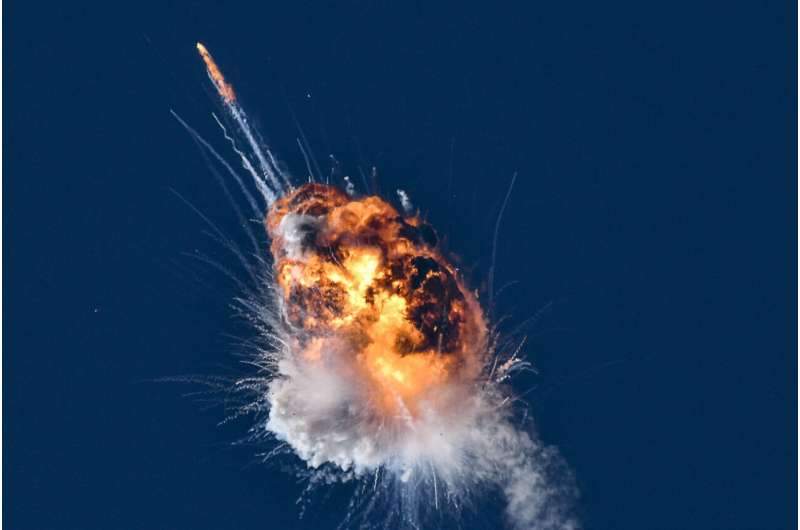
Holding stellar nurseries in your hands
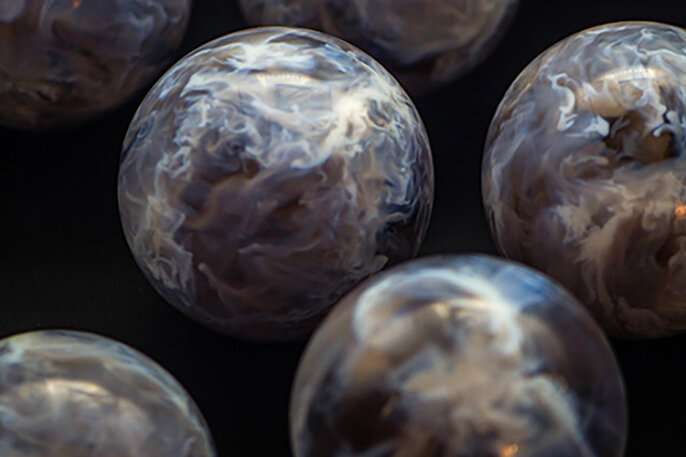
Week in images: 30 August - 3 September 2021
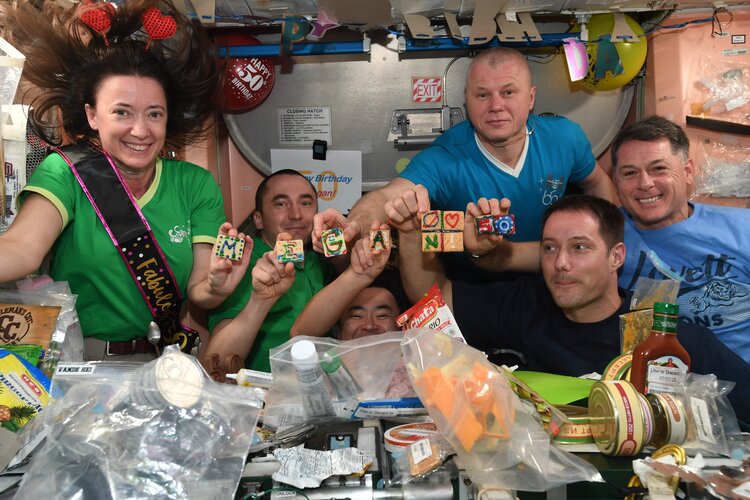
Week in images: 30 August - 3 September 2021
Discover our week through the lens
Drop tests for touchdown on Mars
 Video:
00:06:16
Video:
00:06:16
The ExoMars team have performed important parachute drop tests as crucial preparation for a safe touchdown on Mars in 2023. The European Rosalind Franklin rover will search for signs of past life beneath the surface of Mars with its unique two metre drill and onboard laboratory. The Russian surface science platform Kazachok will study the environment at the landing site. Landing on Mars is always a challenging endeavour and all possible parameters are taken into account.
More information on ExoMars: http://www.esa.int/exomars



